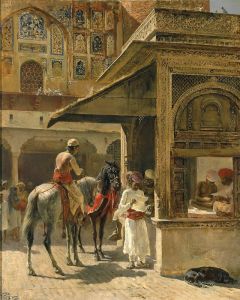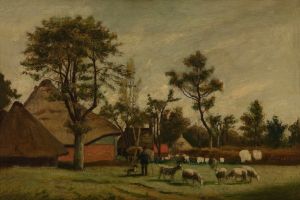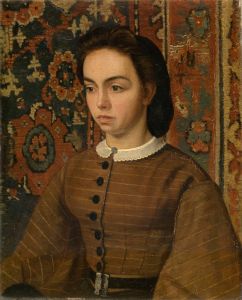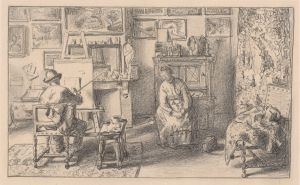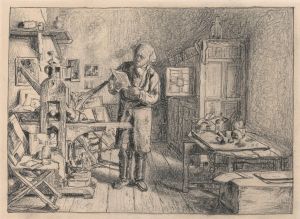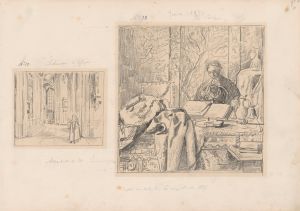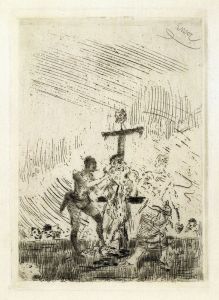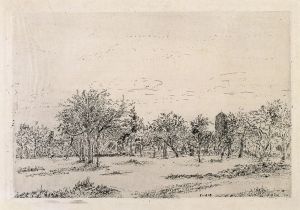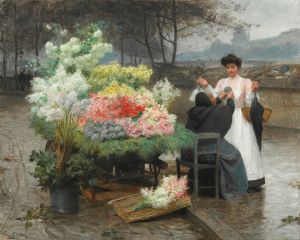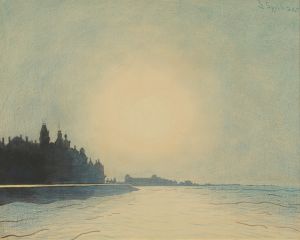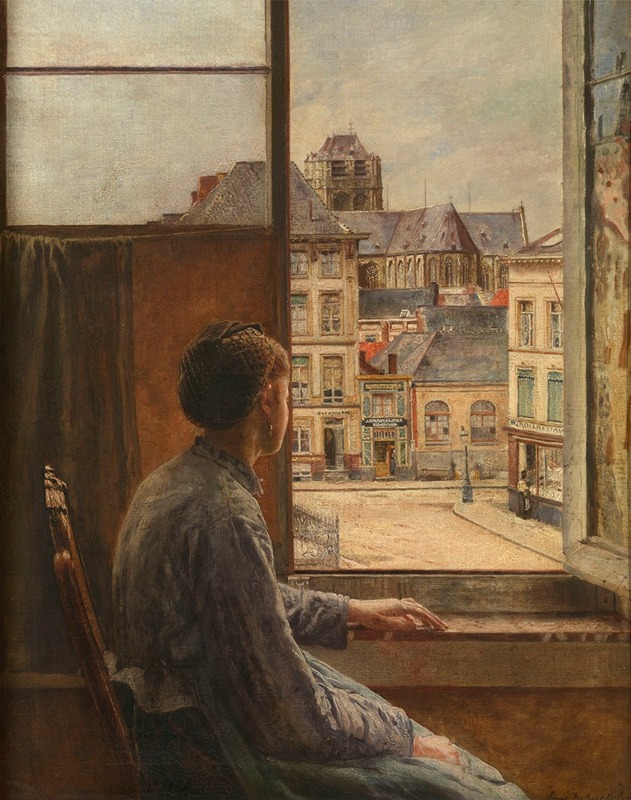
The Teniersplaats in Antwerp
A hand-painted replica of Henri de Braekeleer’s masterpiece The Teniersplaats in Antwerp, meticulously crafted by professional artists to capture the true essence of the original. Each piece is created with museum-quality canvas and rare mineral pigments, carefully painted by experienced artists with delicate brushstrokes and rich, layered colors to perfectly recreate the texture of the original artwork. Unlike machine-printed reproductions, this hand-painted version brings the painting to life, infused with the artist’s emotions and skill in every stroke. Whether for personal collection or home decoration, it instantly elevates the artistic atmosphere of any space.
Henri de Braekeleer, a notable Belgian painter, created "The Teniersplaats in Antwerp," a work that exemplifies his skill in capturing the essence of 19th-century Belgian life. Born in Antwerp in 1840, de Braekeleer was part of a family deeply entrenched in the arts; his father, Ferdinand de Braekeleer the Elder, was also a distinguished painter. Henri de Braekeleer was known for his detailed and atmospheric interiors and genre scenes, often depicting the quiet, everyday life of the Flemish people.
"The Teniersplaats in Antwerp" is one of de Braekeleer's significant works, showcasing his meticulous attention to detail and his ability to convey the mood and character of a scene. The painting is set in Antwerp, a city with a rich artistic heritage, which was home to many renowned artists, including Peter Paul Rubens and Anthony van Dyck. The title of the painting suggests a connection to David Teniers, a prominent 17th-century Flemish painter known for his genre scenes and landscapes, although the exact nature of this connection is not explicitly detailed in the painting itself.
De Braekeleer's work is characterized by a subdued color palette and a focus on light and shadow, which he used to create depth and atmosphere. In "The Teniersplaats in Antwerp," these elements are likely employed to evoke a sense of tranquility and introspection, inviting viewers to immerse themselves in the depicted scene. His technique often involved careful observation and a keen eye for the subtleties of everyday life, which is evident in the intricate details and textures present in his paintings.
The painting reflects de Braekeleer's interest in the interplay between architecture and human activity, a theme common in his oeuvre. His works often feature interiors or urban settings that serve as a backdrop for the unfolding of daily life, capturing moments of quiet reflection or routine tasks. This approach aligns with the broader 19th-century artistic movement that sought to portray the dignity and beauty of ordinary life, moving away from the grand historical and religious themes that dominated earlier periods.
Henri de Braekeleer's contribution to Belgian art is significant, as he helped pave the way for later artists who sought to explore similar themes of realism and everyday life. His works are appreciated for their technical skill and their ability to convey a sense of place and time, making them valuable cultural artifacts that offer insight into the social and artistic milieu of 19th-century Belgium.
"The Teniersplaats in Antwerp" remains an important piece within de Braekeleer's body of work, reflecting his mastery of genre painting and his dedication to capturing the essence of his surroundings. While specific details about the painting's current location or provenance might not be widely documented, its significance in the context of de Braekeleer's career and its representation of Flemish life continue to be recognized by art historians and enthusiasts alike.





